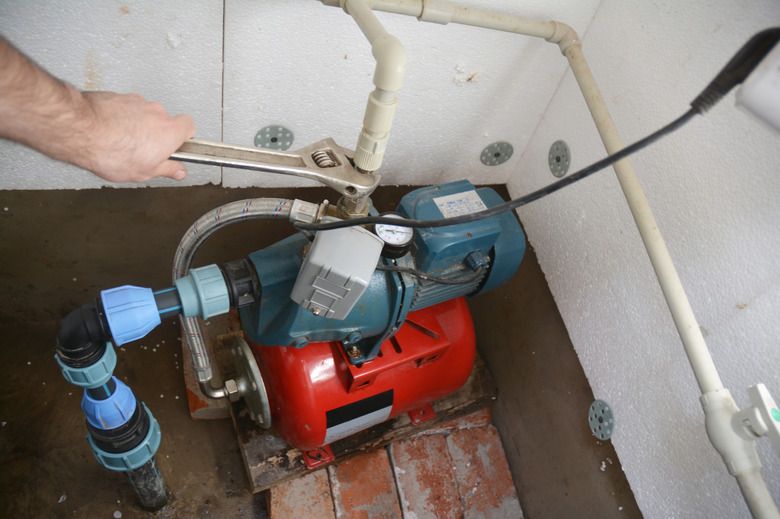How To Prime A Well Pump
The pump is of the most important parts of your well system since its job is to suck water out of the well and lift it to ground level. Priming a well pump means you're removing the air from the pump and filling it with water, which is necessary for the pump to work properly. If your well water pump won't prime, it might be due to defective foot valves, check valves, or pipe leaks. Without priming, the pump will run, but the water delivery stops or you'll have low water pressure.
How to Prime a Shallow Well Jet Pump
How to Prime a Shallow Well Jet Pump
To prime a shallow well jet pump, you'll need to run the pump, keeping its priming plug loose. This process gets rid of trapped air inside the pump. Repeat the process until smooth water flows around the prime plug, and pre-charge the pressure tank.
As the name suggests, a shallow well jet pump is ideal for shallow wells with no more than 18 feet of total pumping lift required. Install a foot valve, or a check valve in a shallow jet well pump's suction line to maintain prime longer. You'll also need to remove prime-reducing air or gases from the pump. To do this, shut the pump's control valve after filling the pump casing and suction line with water.
How to Prime One- or Two- Line Well Pumps
How to Prime One- or Two- Line Well Pumps
- Connect a garden hose that is labeled as lead free and safe for drinking water to the neighboring building's outdoor hose connection.
- Flush out the hose by running the donor building's water through it.
- Connect the hose's other end to a water faucet near the prime deficient well pump.
- Open the recipient building water shutoff valve, which will first expel air out of the recipient building faucet before letting water flow through it.
- Shut the faucet to raise pump pressure to 40 psi.
- Turn off the water tap connections at either hose ends.
- Switch on the pump motor.
- If the pump turns on, pumps water and switches off by itself and building tap water flow is restored, the priming is successfully complete.
- Repeat the process if necessary.
Tip
Priming on a one- or two-line well pump can be accomplished without removing rusty pump plumbing fittings, especially a corroded pump priming casing plug. This prevents accidental breakage and saves subsequent replacement costs.
Self-Priming Centrifugal Well Pumps
Self-Priming Centrifugal Well Pumps
Self-priming surface centrifugal pumps meant for shallow wells can re-prime themselves in about five minutes when they become filled with air. They do this by sending a charge of water into the prime casing. This water and the air from the suction line are drawn into the rotating impeller-created vacuum. The air-water mixture is sent into the air separation compartment where the air is pushed out of the pump, and the water is directed back to the priming casing.
Self-Priming Submersible Well Pumps
Self-Priming Submersible Well Pumps
Self-priming submersible pumps are ideal in deep wells where centrifugal surface pumps won't work. Priming a well pump for this type of setup is not an issue because these pumps are designed to function submerged in water. The pump's turbulent turbine action keeps the impeller area flooded and prevents air from getting trapped inside the pump.
